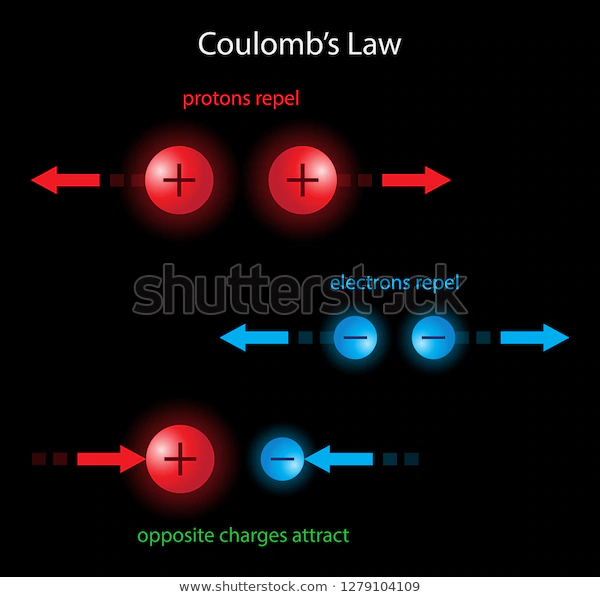3.7 Electric Forces and Free-Body Diagrams
3 min read•november 5, 2020
K
Krish Gupta
AP Physics 2 🧲
61 resourcesSee Units
3.7: Electric Forces and Free-Body Diagrams
Electrostatic Force & Coulomb's Law
Coulomb's Law describes the force of attraction (or repulsion) experienced between two charged point objects. Point charges simply mean that we can approximate the charges as acting from a single point. The equation for calculating electrostatic force is given below:
where q1 and q2 represent the two charges, r is the distance between the charges, and ϵo is the Permittivity of Free Space constant (which is given in your reference tables). Notice that if q1 and q2 are the same charge, we'll end up with a positive result. A positive Fe value leads to repulsion.
Physics Review Note: Electrostatic Force is a force! This means that we need to apply Newton's 3 Laws to the movement of charges too. One very common mistake is to forget that the two charged objects form a Newton's 3rd Law pair, the force between the two objects is equal in magnitude and opposite in direction.
Practice Questions:
1.

Image from collegeboard.org
a) What is the direction of the force on the test charge due to the two other charges?
b) If F is the magnitude of the force on the test charge due to only one of the particles, what is the net force acting on the test charge due to both of the charges?
Answers:
a) The net force must be directed towards the bottom left corner of the page. The test charge and both Q charges are positive so they must repel. The test charge is repelled downwards and to the left.
b) The test charge experiences two forces, both of magnitude F repelling it downwards and to the left. Using the Pythagorean theorem we can determine the resulting net force
2.

Image created by the author
Answer:
C = D > A = B > E = F
Each pair of point charges must have an equal force on them (N3L). A&B and C&D have opposite charges so therefore must attract. E&F have the same charge and must be repelling. The magnitude of the force is directly proportional to the charges and inversely proportional to the square of the separation distance, so the shorter distance in C&D results in a larger force even though the charge in B has a greater magnitude.
Free Body Diagrams (FBD)
FBDs are a very powerful tool. They are less commonly tested in this unit because they are relatively simple. Two main forces you will deal with are the Electric Force and the Gravitational Force and sometimes tension when drawing FBDs for this unit.
A common principle people forget is that if charge 1 exerts a force of X Newtons on charge 2, charge 2 also exerts a force of X Newtons on charge 1. No matter which charge is bigger they exert an equal force on each other.
We will learn about electric fields later. Knowledge of electric fields can be important in drawing FBDs because they will tell you in which direction to point the arrow for the electric force. Basically, the electric force is in the same direction as the electric field if the charged object is positive and the opposite if the charged object is negative.

The image shows arrows pointing as the Electric forces.
Practice Question:
If there is an electric field towards the top of the page and there is an electron in the middle of the page, in what direction will the electric force be?
Answer:
Since an electron is negatively charged, the electric force will be opposite to the electric field. The electric force will be towards the bottom of a page.
Browse Study Guides By Unit
💧Unit 1 – Fluids
🔥Unit 2 – Thermodynamics
⚡️Unit 3 – Electric Force, Field, & Potential
💡Unit 4 – Electric Circuits
🧲Unit 5 – Magnetism & Electromagnetic Induction
🔍Unit 6 – Geometric & Physical Optics
⚛️Unit 7 – Quantum, Atomic, & Nuclear Physics
✏️Frequently Asked Questions
📆Big Reviews: Finals & Exam Prep

Fiveable
Resources
© 2023 Fiveable Inc. All rights reserved.